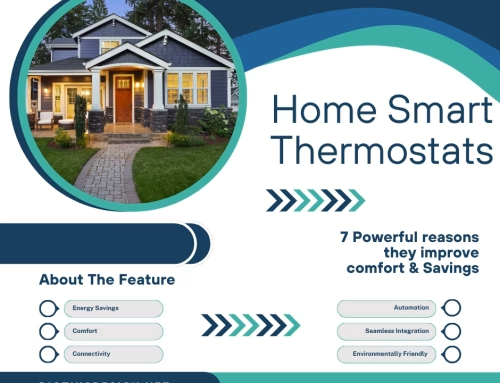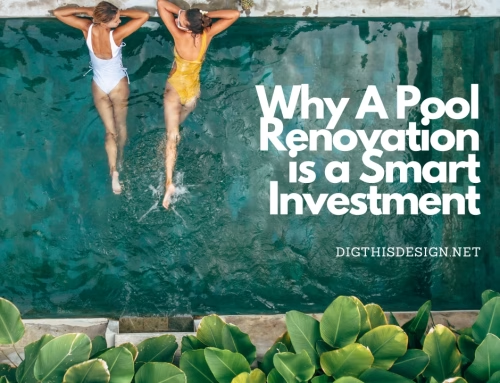Considering going on solar but on a budget? Today, the revolution of green energy has caused the emergence of cleaner, safer, and more environmentally friendly sources of energy. There are high hopes that it’ll gradually phase out or decimate the conventional unsafe sources of energy.
How To Go Solar On A Budget
These conventional energy sources are unsafe through their links to carbon emissions, especially during their exploration process. High carbon footprints have multiple disastrous effects on the environment and thus necessitate the need for solar energy.
However, the high cost of acquiring a solar power system discourages most people from getting this renewable and relatively safe form of energy. If you’re interested in solar energy, here’s how to go solar on a budget.
Why The High Cost?
Although it comes from a free natural source, solar energy needs to be harvested, converted, and also stored before it can be usable. All these transformative processes require expensive high-tech devices besides soft costs incurred from installation and suppliers’ services.
The photovoltaic panels that convert sunlight into electrical energy, inverters for converting direct current to alternating current, and batteries for storage are all required for integrating solar energy into any setting. Therefore, both the hardware and soft costs cause the hike in the price of running a solar energy system and its integration.
How To Beat The Cost
The global drive towards green energy has caused a decrease in solar energy costs in recent years. However, the integration of solar energy into homes or businesses remains a luxury for many. Having a plan can make it affordable, but not necessarily cheap.
The following tips can help you transition to solar power without breaking the bank.
-
Compare Quotes From Different Suppliers
Just like any other non-monopolistic service, there are many suppliers of smart solar energy for both domestic and industrial use. And since the cost of services from such companies isn’t centralized, individual suppliers can fix their prices at their convenience.
This implies that the overall cost of the hardware and the soft costs from installation and service charges vary across different suppliers. However, this makes it a good economical attempt to get quotes from different companies or solar service suppliers before choosing one with good value for money.
Factors such as years of service, level of expertise, and price regulation can influence the cost. That’s why some suppliers may have prices that are slightly higher than others.
Because of this, it’s vital to consider the online reviews from customers, the quality of service, and the affordability of the price before deciding. By doing so, you can choose the company or supplier that can suitably meet your needs.
-
Gradual Transition
The full integration of solar energy into businesses or homes can be very overwhelming, especially in large business settings or homes with many energy needs. Instead of a complete replacement of the conventional power supply being relied on, homeowners and business owners can consider a gradual transition into solar energy.
For instance, homeowners can consider smaller but essential and less expensive solar elements whose budget doesn’t allow them to go solar throughout their entire home. In addition, outdoor lighting, as well as common appliances such as water pumps and heaters, can run entirely on solar power.
In the long run, the utility savings from such adjustments can run a fully home-integrated solar energy system.
-
Prioritize Sunlight Accessibility
Even though it’s naturally available, they restrict accessibility to sunlight in some regions because of certain factors. I say such regions to have low ‘solar resource assessment’. It’s a term referring to the amount of solar energy available in an area.
For instance, panels of rooftop solar systems are usually placed facing south since a south-facing roof receives sunlight at its best intensity and longest time. A roof that isn’t towards the sun cannot expose the panel to adequate sunlight for the most energy.
Hence, the amount of sunlight available to rooftop solar panels depends on the angular orientation and size of the roof. In addition, surrounding trees, tall buildings, and other tall structures can obstruct sunlight, therefore preventing the panels from harvesting successfully.
In such situations, whereby the sunlight available to a home is minimal, bigger solar arrays are required to generate the same quantity of energy as those with adequate sunlight. The bigger solar array, which comprises multiple solar panels, comes at an extra cost.
Therefore, the reducing the cost of running solar at any facility by maximizing the facility’s access to sunlight. It’s important to remember that solar energy systems are best fit for regions with an adequate supply of sunlight all year round.
-
Consider Financing Options
To support the move towards a safer environment, many government credit facilities and even solar companies offer cheaper financing options to those considering solar energy.
Such financing options come as solar leases, power purchase agreements, and solar loans with no or low interest rates. With these options, the cost of incorporating solar energy into your home or other facilities is not paid by you or its payment is spread over a long period of years.
Some solar companies have lease options that include free installation for clients while they spread the payment over many years. Usually, the solar setup owners are such companies. While the clients pay a flat monthly fee with full access to the solar facility. Solar leases offer an additional advantage of excluding the clients or homeowners from maintenance and operational costs, which are all covered by the leasing company.
In addition, there’s also a power purchase agreement option in which they make solar installations at no cost to the homeowner. But the solar company resells power generated from it to the client at a rate that depends on their power consumption. However, this rate is cheaper when comparing conventional electricity charges in utility bills.
Significantly, this option helps the homeowners to enjoy tax-free solar energy supplied to their homes. It also provides homeowners with more convenience. Since, the solar company carries the maintenance of the solar panels out. These financing options help ensure that people enjoy the benefits of solar electricity while having solar on a budget.
-
Flexible Payment Plans
Both the solar company and the potential client can reach a mutual agreement on a flexible payment plan for services. Such an agreement carefully states the initial and subsequent payment to be made by the client, alongside their due dates.
The initial payment is typically a small percentage of the total amount, with subsequent payments properly spaced from it. This gives the client enough time to gather the remaining amount without mounting pressure on their finances. With such flexible payment plans, homeowners have full access to solar power. Even if you still have not made the full payment.
Flexible payment plans also allow the homeowner to enjoy solar incentives as applicable to some countries, like the United States. Solar incentives reward citizens for early adoption of solar energy.
These incentives come as tax credits, net metering programs, and feed-in tariffs, among others. In addition, these incentives allow you to monetize your solar installations and speed up your payback period.
-
Community Solar
This is another way of going solar without breaking your bank. A community can have a solar power plant that distributes power to its residents at reduced rates. It can be free if the charitable organizations own it.
Most of the time, the community solar program doesn’t require any installation on the part of the residents or customers. Moreover, the community solar program allows low-income homes to access solar energy at reduced installation and maintenance costs.
Since it’s a remote setup, it can benefit homes with structural limitations for solar installations. Those with limited access to sunlight as well.
-
Choose Solar Companies With Warranty
One can benefit from solar companies with good warranty packages. These warranty packages help to cover repairs that arise from failures of the panels.
A solar warranty ensures clients enjoy maximum production output besides panel reliability. During the years of usage, costs can add up through damage which ordinarily a good warranty would cover. This ensures that the clients don’t have to pay for damages that are in the warranty agreement.
-
Energy-Efficient Mortgages
Energy-efficient mortgages help individuals finance energy-saving improvements in their homes. Having energy-efficient homes greatly helps in reducing utility bills. One of the energy-saving improvements that qualify for this mortgage is going solar.
This low-interest mortgage is available at a fixed rate with no additional charges from one month to the next. Also, while we can easily fix the repayment into a household’s monthly budget, the value of the house keeps increasing.
Since energy-efficient homes are safer for the environment, and help conserve energy. They also have the potential to increase a house’s value. You can consider it a great deal in the long run.
Conclusion
Transitioning to solar energy can help reduce utility bills in the long run. And this makes it a great investment worth trying. However, before making such a transition, it’s important to research the available options in your area.
This article has highlighted some simple ways of making solar on a budget for any intending clients. Now they can enjoy the benefits of clean energy without spending a fortune.
Other Posts You May Enjoy:





